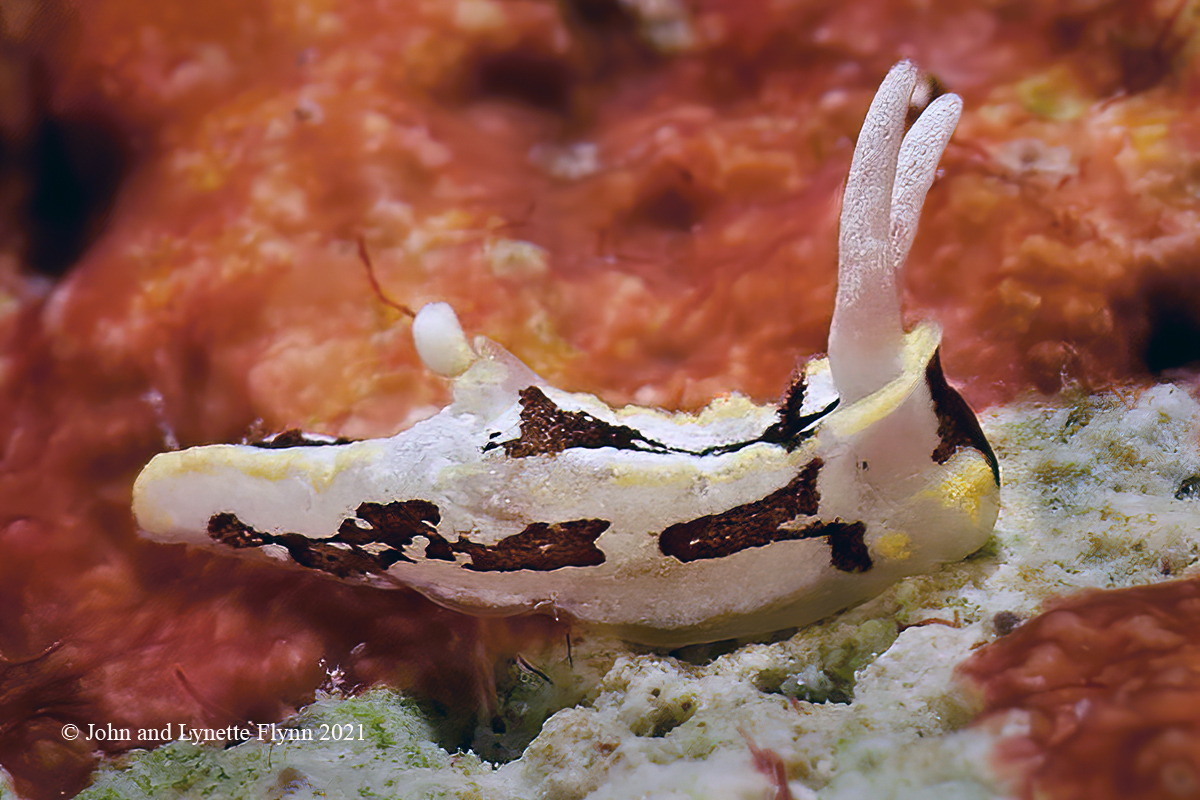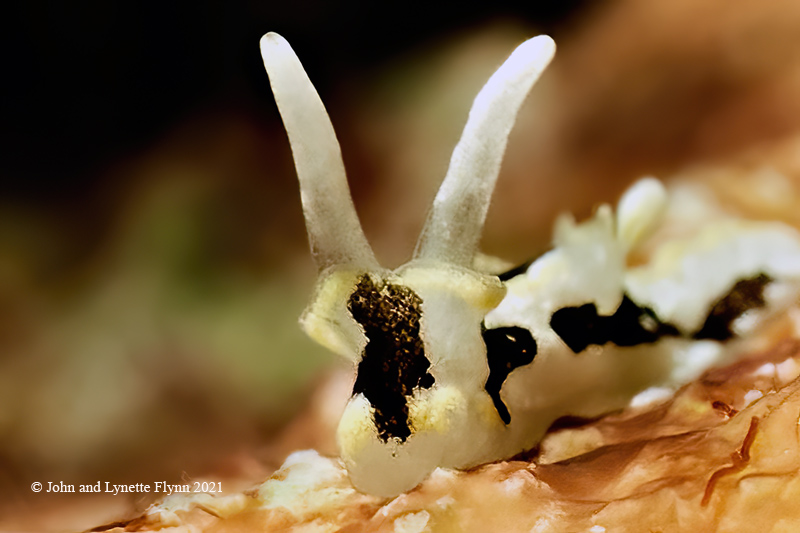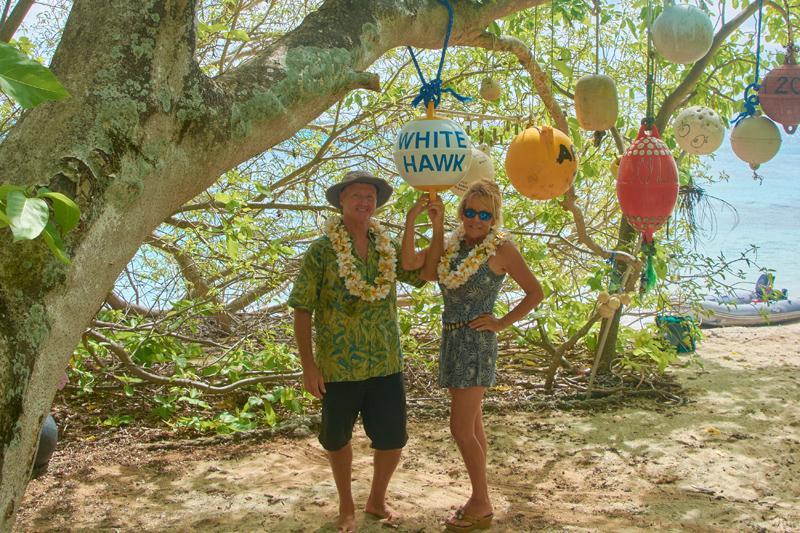 |
Image courtesy of John and Lynette Flynn
Majuro atoll in the Marshall Islands

|
Goniodoridella sp. 2 (in NSSI 2nd Ed.)
These little Goniodoridid's can be a pain in the butt to ID even though species differ greatly. Sort of a confusing group, species are morphologically different from similarly shaped polycerids, and are more closely aligned with cryptobranch dorids than other phanerobranch species. Species in the genus Goniodoris have a well developed notal edge and lack prominent appendages on the notutm. Members of the genus Goniodoridella have elongate extrabranchial appendages, smooth rhinophores, and very reduced gill branches. John and Lynette's critter appears to be Goniodoridella sp. 2 in NSSI 2nd Ed, page 50, but with a missing extrabranchial appendage. The yellow margin is a good characteristic to look for, as is the patch on the head, one between the rhinophores and gill and several on the sides of the body. John and Lynette's find expands the geographic information on this species adding the Marshall Islands to Papua New Guinea and the Philippines. Another nice find by the Flynns! Dave Behrens Sammamish, WA 98074 Dec., 2021 Send Dave email at davidwbehrens@gmail.com |
John and Lynette Flynn at the "clubhouse" of the Rongerik Yacht Club.
Rongerik is an uninhabited atoll in the Marshall Islands and to join the club you have to find some debris on the shore,
put your boat name on it, and hang it in the open air clubhouse.

We are John & Lynette Flynn, full time live-aboard cruisers and free-dive photographers who sailed our 46' boat "White Hawk" out of San Diego in 2014 and have been cruising the Pacific ever since. We are currently "stuck" in the Marshall Islands due to COVID border closures, but we have been enjoying our time here hunting Opisthobranchs in shallow water from 0.5 to 5 meters. We are currently shooting with Sony RX100V's in Nauticam housings with CMC-1 wet lenses, SOLA Video Pro lights, and a Sea & Sea YS-D3 strobe. Last year we photographed 51 species of Opisthobranch at Rongelap Atoll, and we are currently at over 100 species of Opisthobranch photographed at Majuro Atoll, including our first-ever discovery of a previously unknown species, a new Unidentia. We still shoot other animals but we are now full-fledged "nudiholics." Our motto is: "If you don't go - you don't know. If you don't look - you don't see." The Goniodoridella sp. 2, which measured 5mm long, was photographed with a Sony RX100V compact camera in a Nauticam housing with a Nauticam CMC-1 wet macro lens. A SOLA 3800 was used as a focus light with a Sea & Sea YS-D3 strobe hanging over the front of the lens. Working distance was about 2 inches and the camera settings were 1/320, f9, ISO 100. The images were processed using Capture One 20 Pro, Topaz Labs DeNoise, and Gigapixel. |
Send John and Lynette mail at svwhitehawk@yahoo.com

Attention all you Sluggers, and you know who you are! The NSSI 2nd edition is now available in ebook PDF and book form . The hard back version will become available Nov. 1st. Both will cost $65 (individually). You will need to jump through a few hoops to get the electronic version as pdf distribution is protected by Adobe ID!! Please read the following to enable reading your electronic purchase! This new 2nd Edition is updated and reorganized, including 185 new species. Among other features, the new edition includes additional photographs of species, an identification key, and an up-to-date classification reflecting the latest evolutionary relationships. The Indo-Pacific represents the largest expanse of tropical ocean in the world, stretching from the Indian Ocean coast of southern Africa and the Red Sea to the central Pacific of the Hawaiian Islands, Easter Island and the Marquesas. This region supports the most diverse marine fauna of any place in the world for most groups of marine organisms. The nudibranchs and sea slugs are no exception to this rule; there are about 3,000 described species of these organisms in the world and at least 40% of these have been found exclusively in the Indo-Pacific tropics. This book illustrates 2,138 Indo-Pacific nudibranchs and sea slugs, including many undescribed species.
|

|
